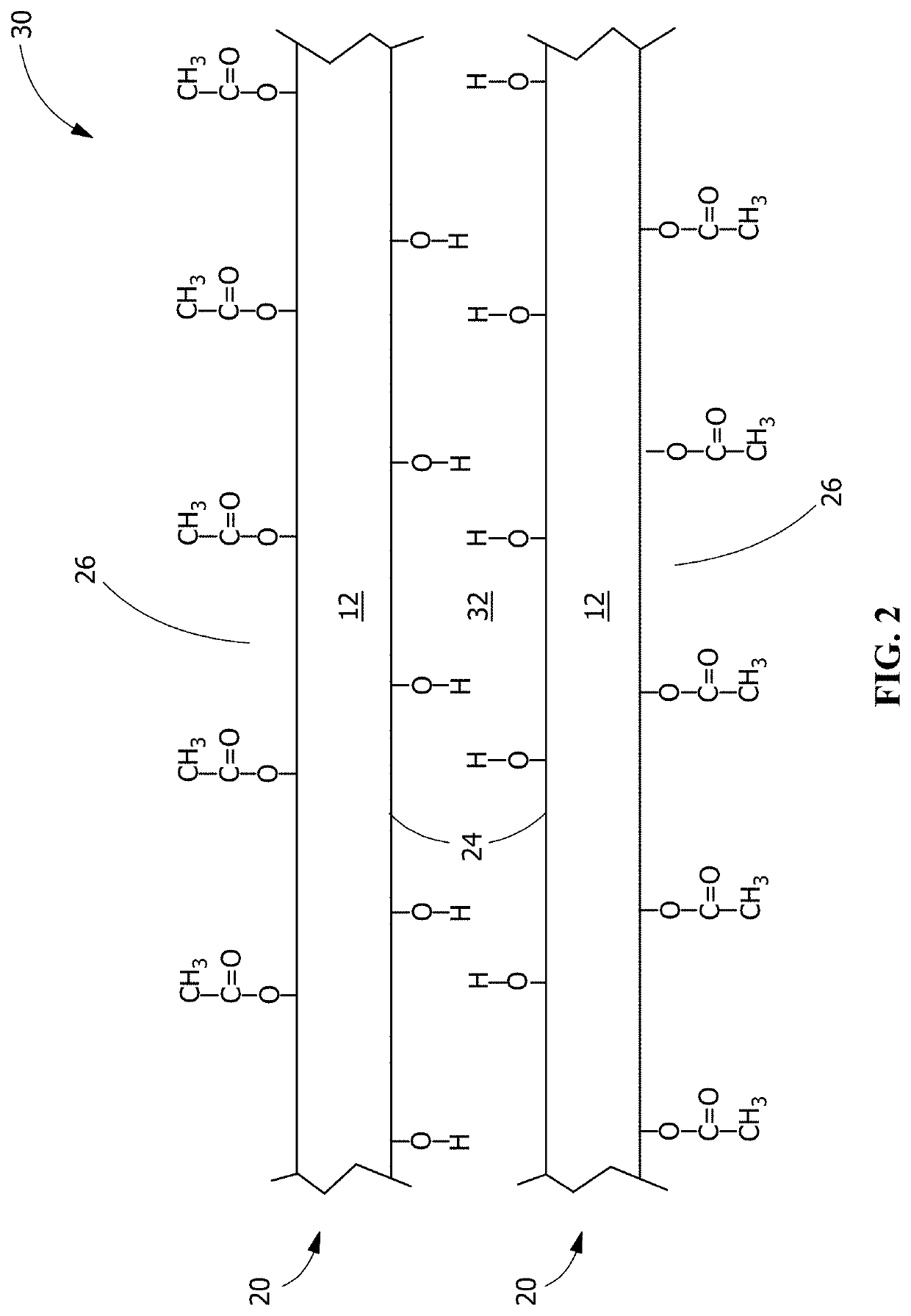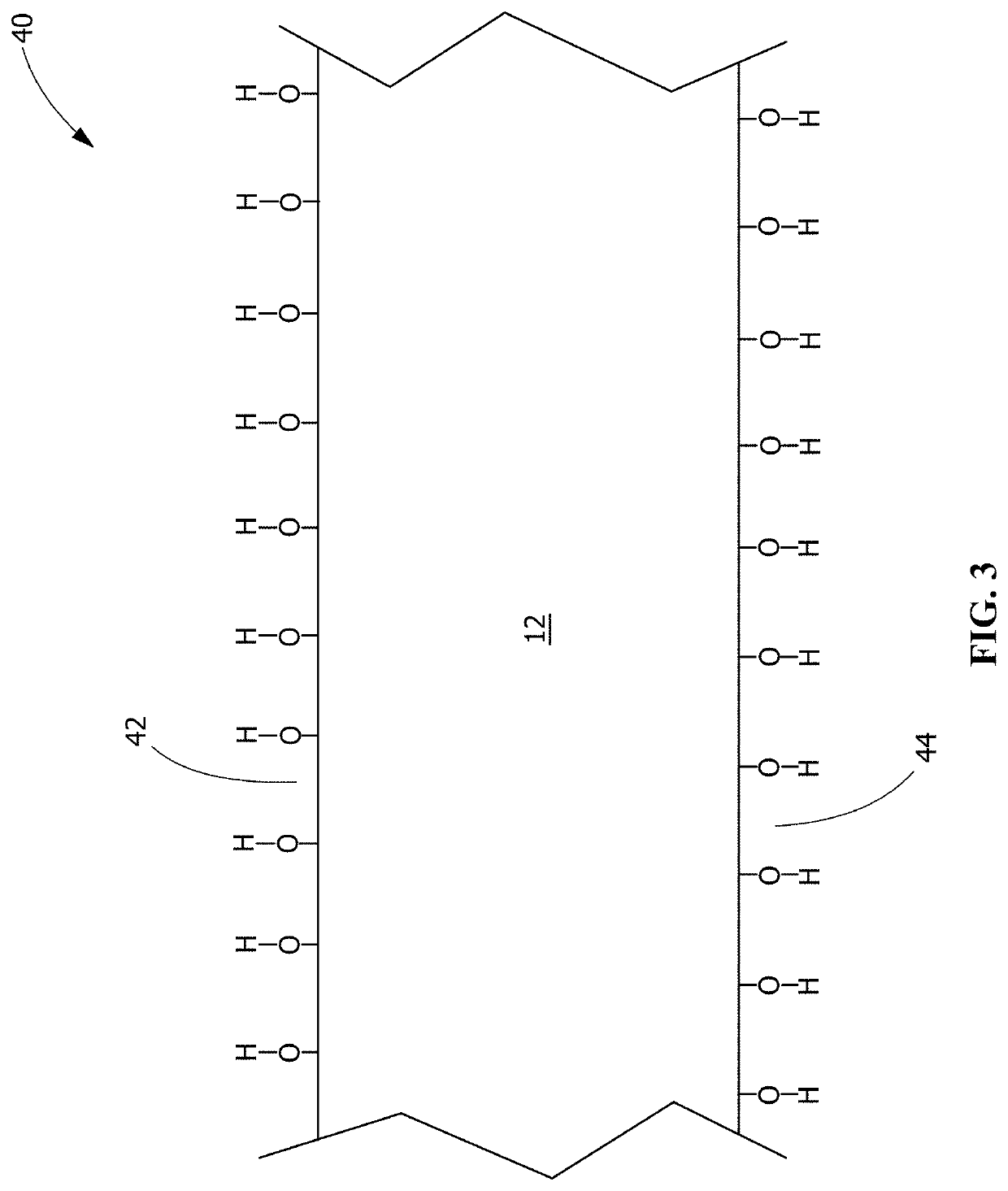Modified polymer film surfaces for single-use bioreactor bags and biocontainment and methods of forming same
a technology of polymer film and biocontainer, which is applied in the field of polyethylenevinyl acetate (pe), can solve the problems of less expensive, negatively affecting the bioreactor, and the inability to readily modify off-the-shelf films available from the food industry
- Summary
- Abstract
- Description
- Claims
- Application Information
AI Technical Summary
Benefits of technology
Problems solved by technology
Method used
Image
Examples
example 1
[0074]A 2-cm by 2-cm PEVA film was placed in a scintillation vial with 10 mL of a 1.5 M solution of sodium hydroxide in methanol. The vial was maintained on a hotplate for 48 hours at a set temperature of 50° C. (122° F.). The test film was then removed from the vial, washed with deionized (DI) water, and patted dry. A control film of PEVA was washed with DI water and patted dry. The test film and the control film were each individually evaluated by attenuated total reflectance (ATR) FT-IR spectroscopy, with the resulting spectra being shown in FIG. 8.
[0075]The FT-IR spectra in FIG. 8 show a decrease of intensity at a wavenumber of about 1740 cm−1 and an increase of a broad peak at a wavenumber of about 3300 cm−1 for the test film relative to the control film, indicating a decrease in ester functionality and an increase in hydroxy functionality in the test film relative to the control film, consistent with the surface acetate groups of the PEVA having been converted to hydroxy group...
example 2
[0079]The interior surface but not the exterior surface of a bag was exposed to saponification conditions similar to those described for Example 1. Referring to FIG. 9, ATR FT-IR spectroscopy of the interior surface and the exterior surface show greater hydroxy functionality on the interior surface than the exterior surface, indicating conversion of the acetate group in PEVA to an alcohol functionality on the interior surface.
example 3
[0080]A converted PEVA film was prepared as described for Example 1. A 40% solution of PGS was made in THF with tin octanoate (2% w / w with respect to PGS) added as a catalyst. The converted PEVA film was submersed in the PGS solution for 30 seconds, removed and cured in a 90° C. oven for 3 days at a pressure 10 torr, resulting in deposition of a PGS coating 92 having a thickness of about 30 μm on the converted PEVA film 94, as shown in FIG. 10.
PUM
| Property | Measurement | Unit |
|---|---|---|
| depth | aaaaa | aaaaa |
| conversion depth | aaaaa | aaaaa |
| thickness | aaaaa | aaaaa |
Abstract
Description
Claims
Application Information
 Login to View More
Login to View More - R&D
- Intellectual Property
- Life Sciences
- Materials
- Tech Scout
- Unparalleled Data Quality
- Higher Quality Content
- 60% Fewer Hallucinations
Browse by: Latest US Patents, China's latest patents, Technical Efficacy Thesaurus, Application Domain, Technology Topic, Popular Technical Reports.
© 2025 PatSnap. All rights reserved.Legal|Privacy policy|Modern Slavery Act Transparency Statement|Sitemap|About US| Contact US: help@patsnap.com



